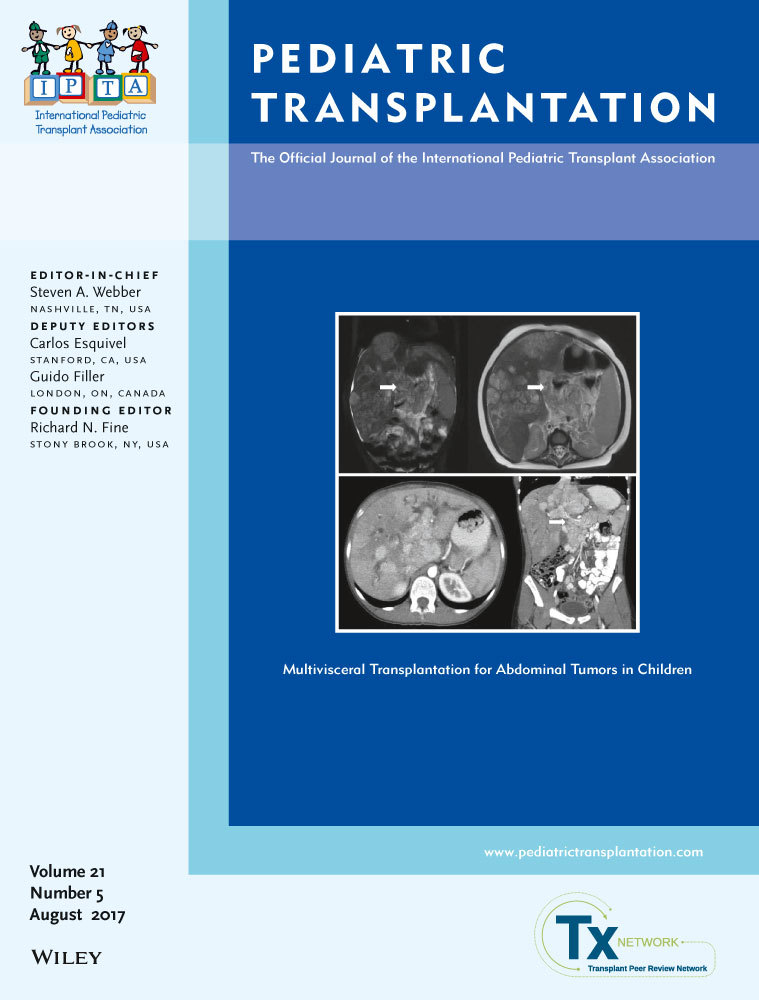Very small pediatric donor kidney transplantation in pediatric recipients
Abstract
Kidneys from very small pediatric donors (age <5 years, weight <21 kg) may be a means to increase the donor pool for pediatric recipients. Transplantation of small pediatric kidneys is more commonly performed in adult recipients due to the increased risks of technical complications, thrombosis, and early graft failure. While these risks are abrogated in adult recipients by limiting the donor weight to ≥10 kg and using the EB technique, it is unknown whether pediatric recipients achieve comparable results. US national data were assessed for all first-time, deceased-donor, kidney-only pediatric recipients, 1/1996-10/2013, who received very small pediatric donor grafts or grafts from ideal adult donors. We identified 57 pediatric EB, 110 pediatric SK, and 2350 adult transplants. The primary outcome was 3-year all-cause graft survival. Kaplan-Meier curves showed worse outcomes for pediatric grafts compared to adult ideal grafts (P=.042). On multivariate analysis, pediatric recipients of SK grafts had significantly higher HRs (aHR 2.01, 95% CI 1.34-3.00) and pediatric recipients of EB grafts had somewhat higher non-significant HRs (1.57; 95% CI 0.88-2.79) for graft survival. These results suggest cautionary use of very small pediatric donors as a source to expand the donor pool for pediatric candidates.




